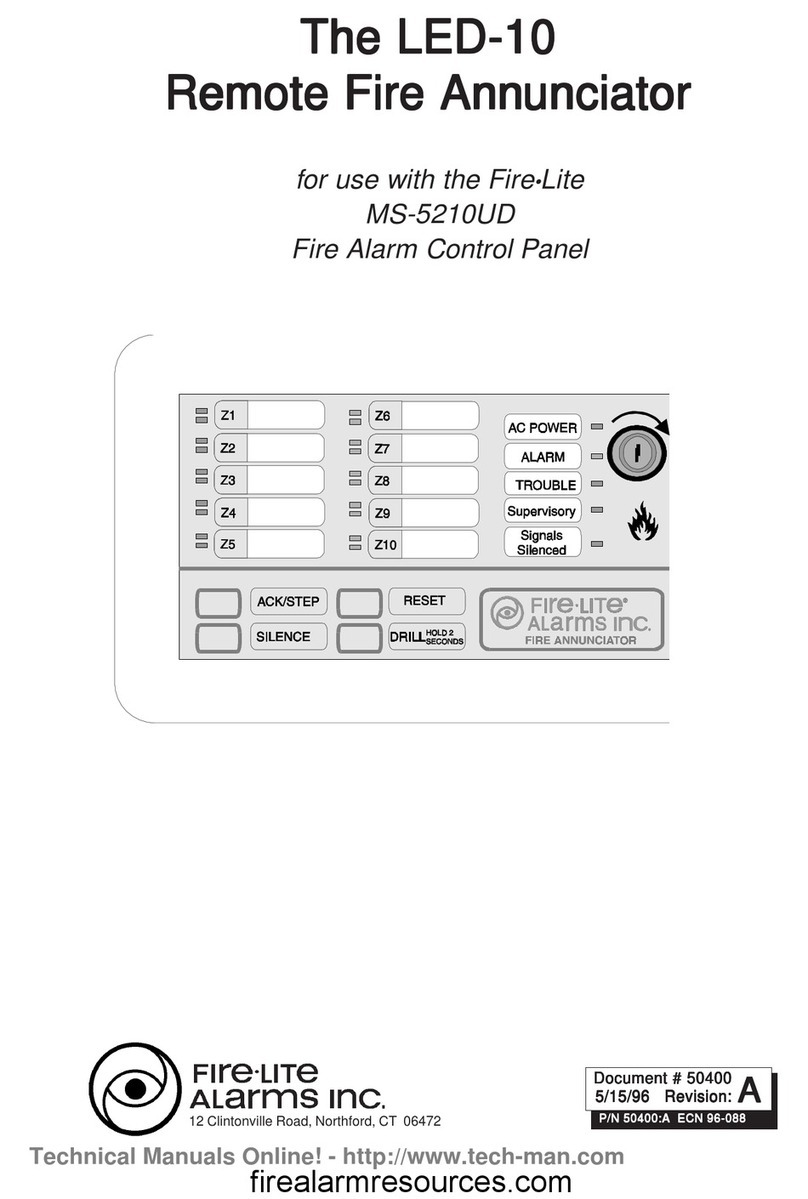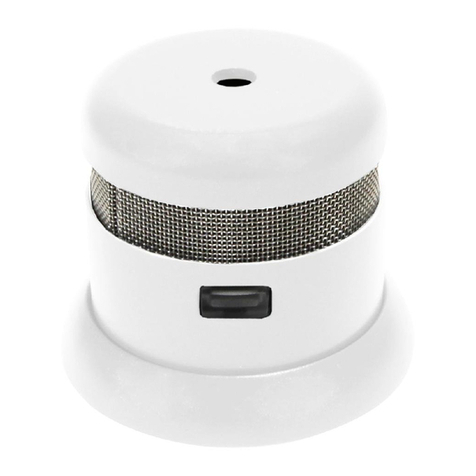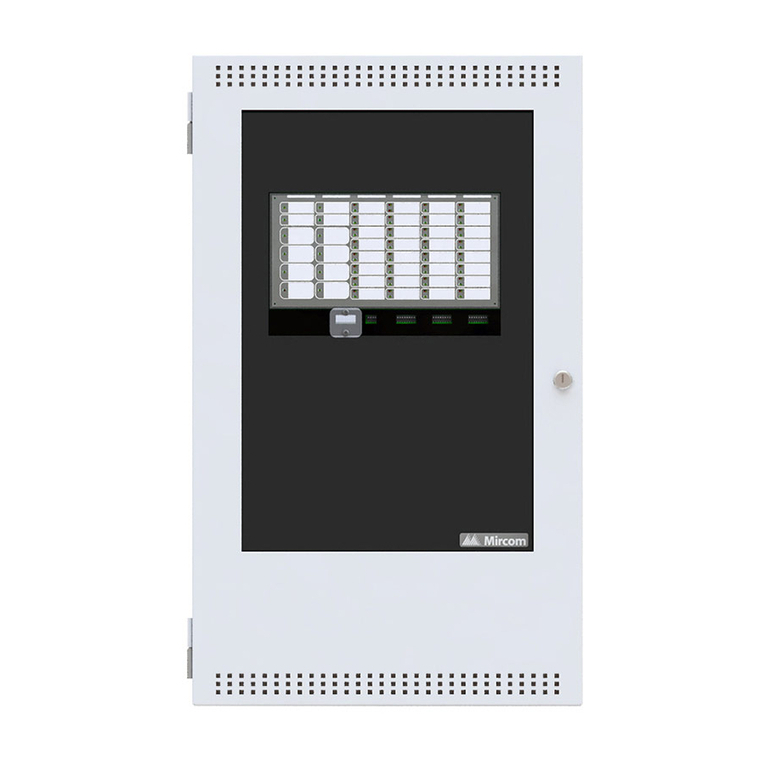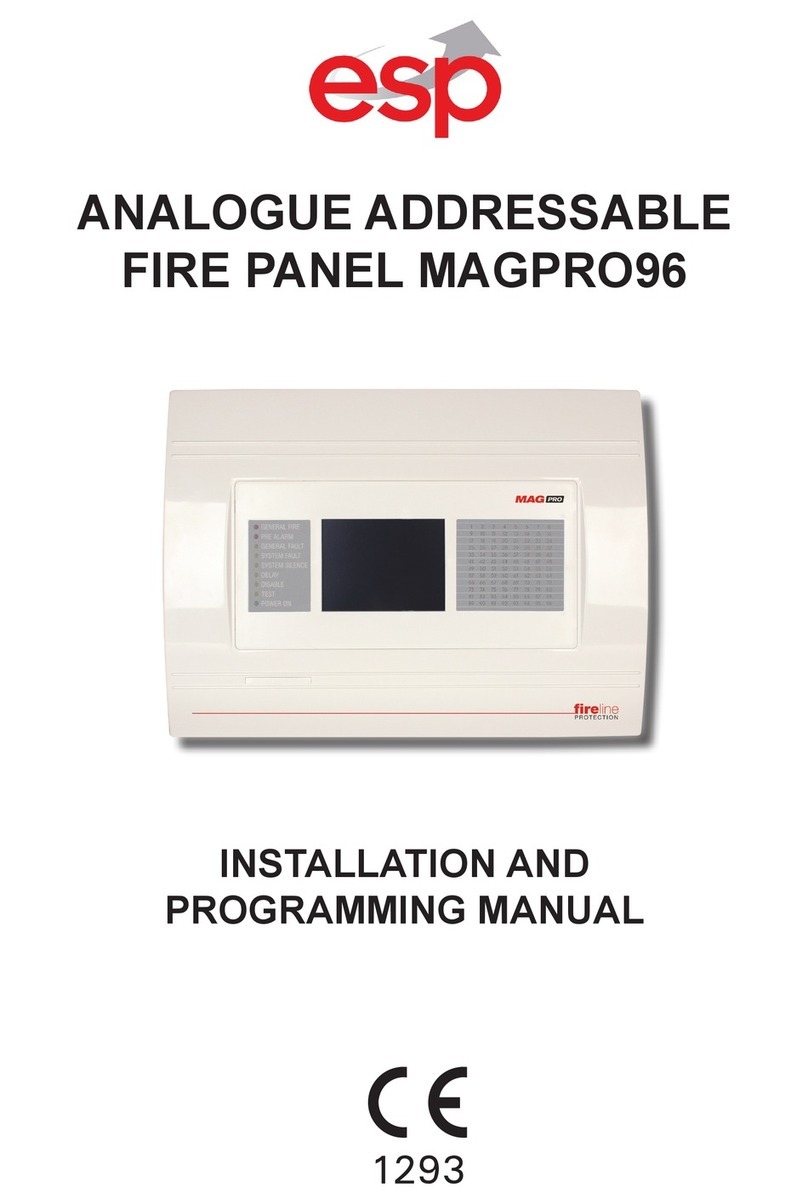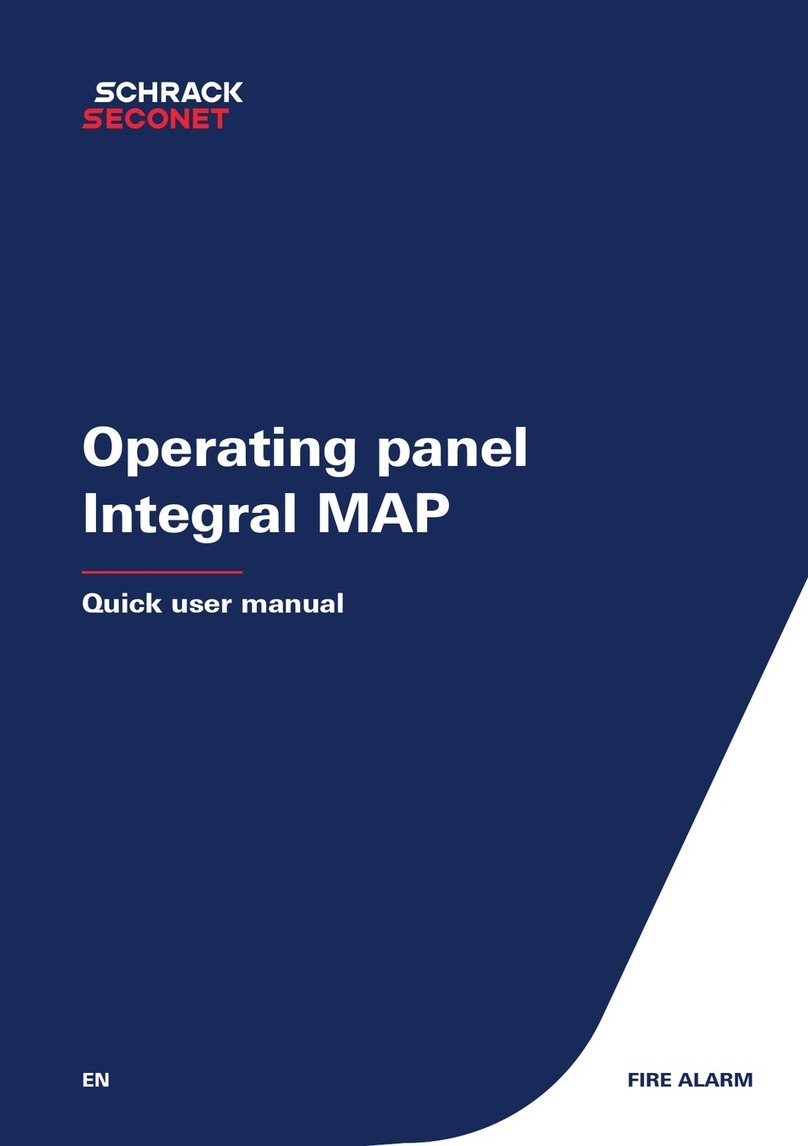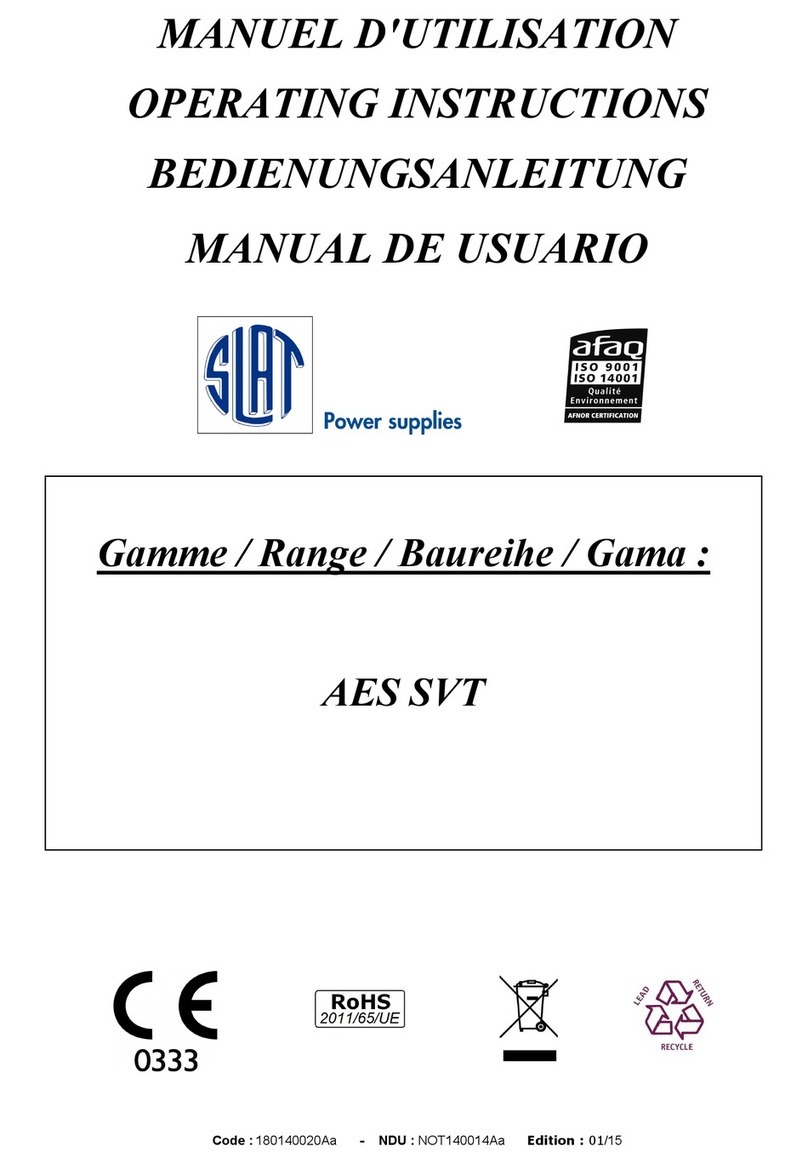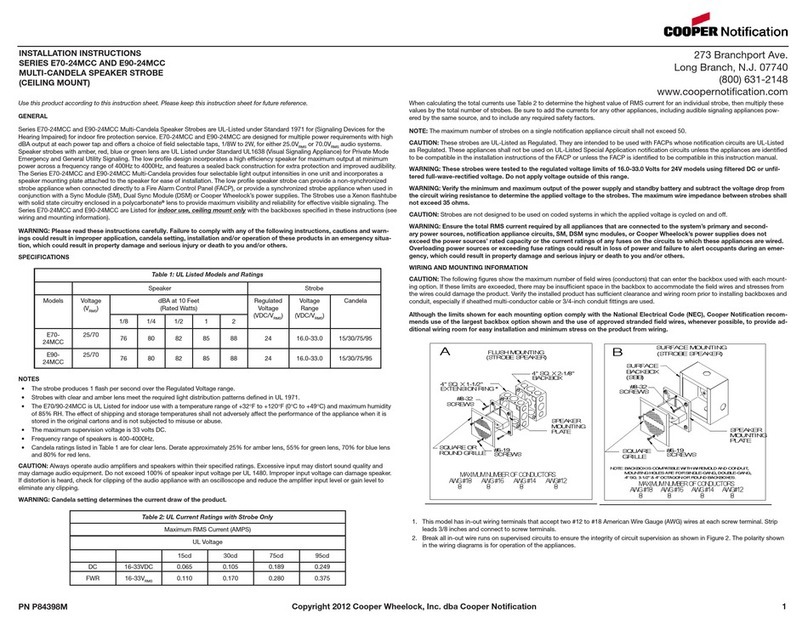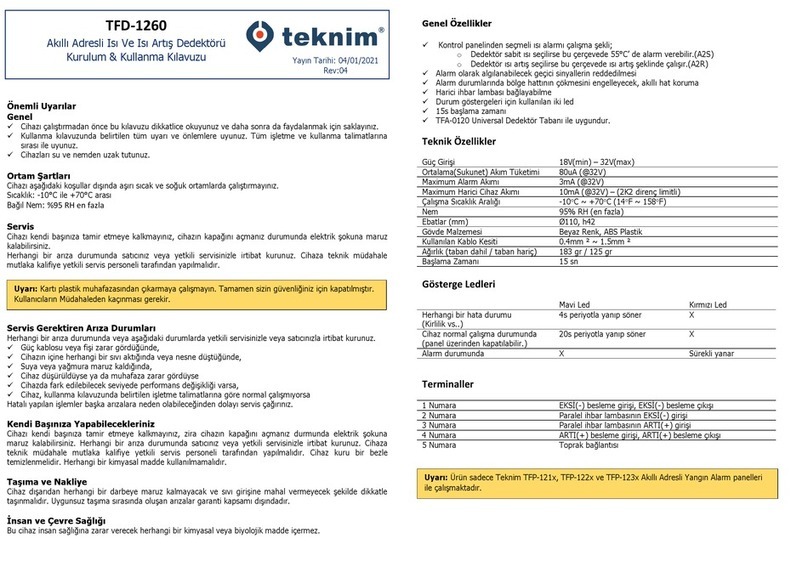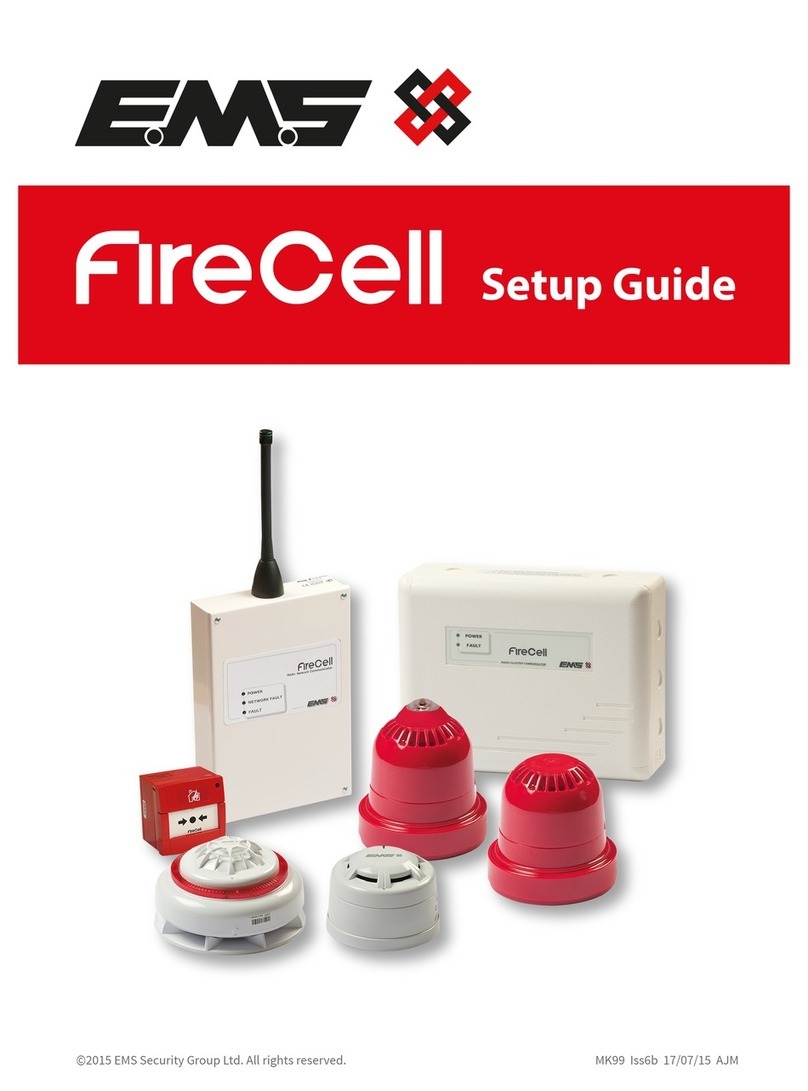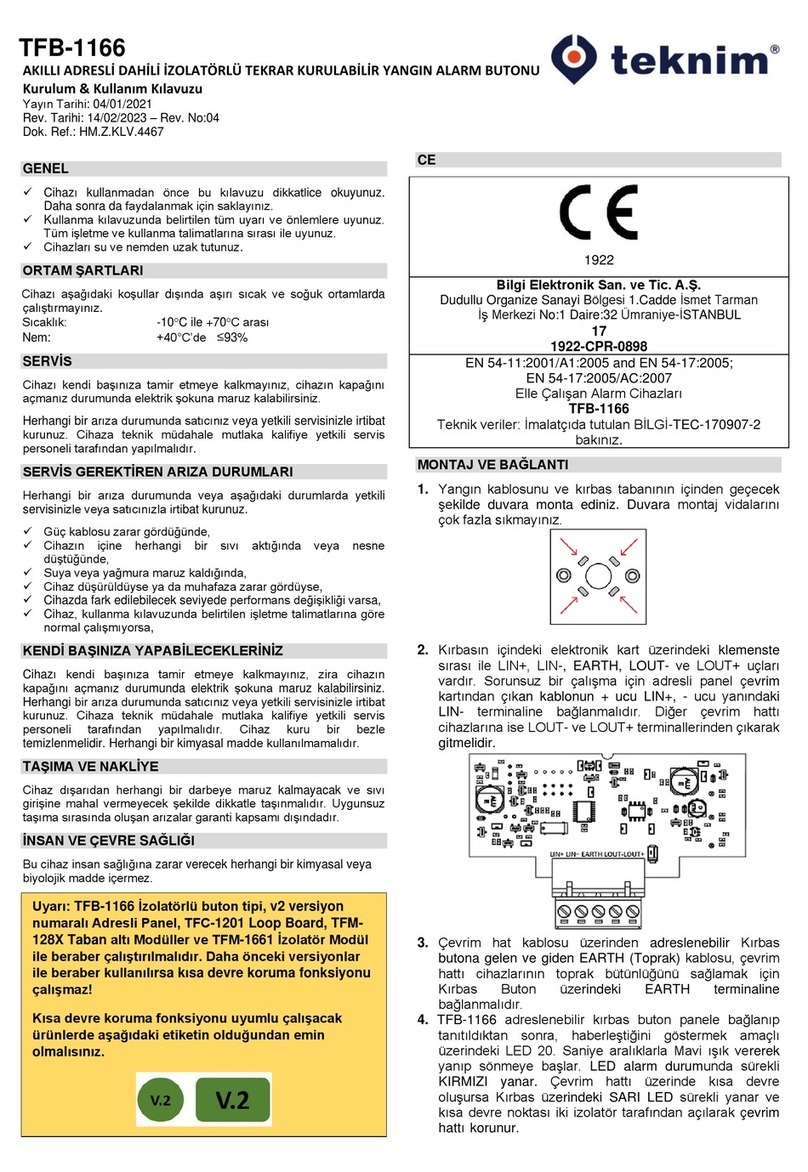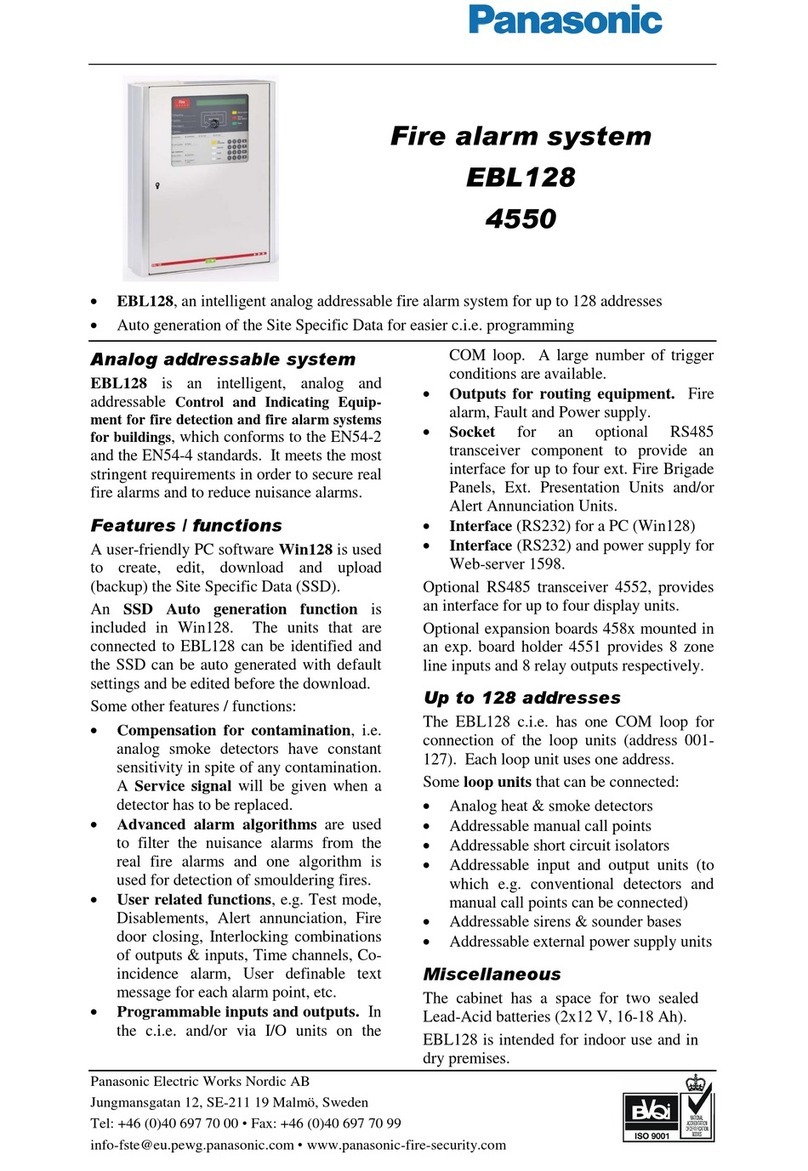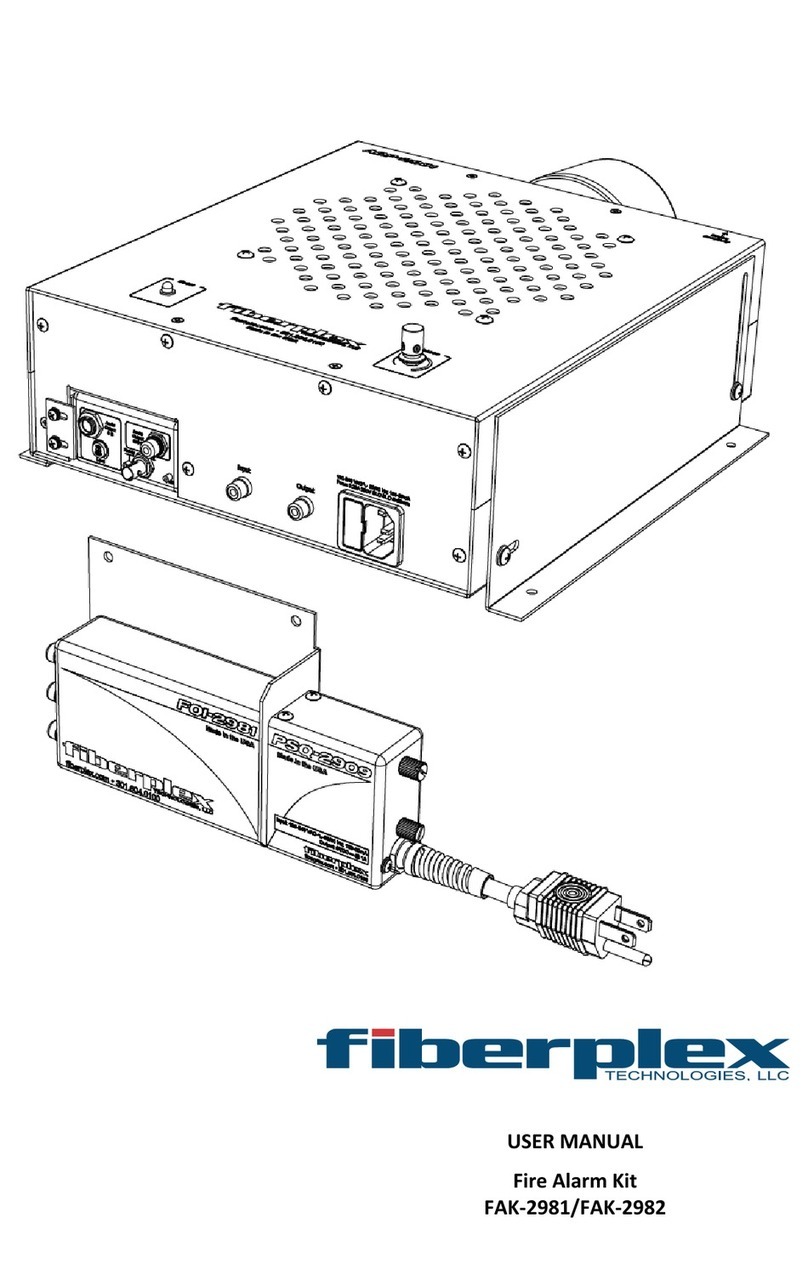Ref No:
DATE:
PAGE: ISSUE:
NISM/NHD/03
NHD-G SERIES
HEAT DETECTOR
INSTRUCTION MANUAL
MARCH 2001
35
OF 03
SECTION 7 - MAINTENANCE AND CLEANING
The NHD-G detector i a high quality product engineered
for reliability and to obtain optimum performance,
periodic maintenance i required. If proper preventative
maintenance i not carried out, there i a likelihood of
malfunction, including fal e alarm . Servicing of the
y tem hould be carried out in accordance with BS
5839 Part 1, Fire Detection and Alarm Sy tem for
Building : Code of Practice for Sy tem De ign, In talla-
tion and Servicing.
The maintenance procedure de cribed below, hould
be conducted with the
following frequency:
One month after installation: Routine In pection
and every 3 month
Every 6 months: Operational Te t
Every 12 months: Functional Te t and
depending on
ambient condition ,
Cleaning
Routine Inspection
i) En ure that the detector head i ecure and undam-
aged.
ii) Check that the thermi tor entry aperture are in no
way ob tructed.
iii) En ure that the urface of the detector outer cover
i clean. If there are depo it due to the pre ence of oil
vapour, du t etc, then the detector hould be cleaned in
accordance with the cleaning in truction detailed later
in thi manual. It may be advi able to en ure that uch
cleaning i conducted regularly in future.
iv) En ure that no equipment which may generate
exce ive heat, ha been in talled in the vicinity of the
detector ince the la t routine in pection. If uch
equipment ha been in talled, then you hould notify
the Safety Officer or other competent authority that it
pre ence may cau e fal e alarm .
Operational Test
The purpo e of the Operational Te t i to confirm the
detector correct operation in re pon e to a heat condi-
tion.
i) Take any nece ary precaution at the control panel
to limit the ounding of the alarm .
ii) Te t the detector with heat from a warm air gun
de igned for heat detector te ting or a imilar device
uch a a hair dryer. Check that the detector give an
alarm condition within 10-20 econd depending upon
the detector grade and the applied air temperature.
Check that the LED indicator on the detector illumi-
nate .
N.B Hot air blowers sold for paint stipping, soldering
pipes etc, generate sufficient heat to damage the
detector and should not be used for testing heat
detectors.
iii) After the detector ha given the alarm condition,
re et thedetector from the control. It may be nece ary
to allow ome hort time to elap e before re etting the
detector to allow any re idual heat from the te t, to
di per e.
iv) Before proceeding to the next detector, en ure that
the detector ju t te ted, doe not reoperate due to the
pre ence of re idual heat.
Functional Test
The Functional Te t check the detector operation.
The Functional Te t can only be carried out with the
NID-ET3 Electronic Te ter with uitable adapter. How-
ever, the e detector may, be returned to our factory for
Functional Te ting.
Detail of the Functional Te t method are given in the
In truction Manual for NID-ET3, ref. NISM/ET35/01A.
Cleaning
i) Remove the heat detector from it ba e.
ii) U ing a oft lint-free cloth, moi tened with alcohol
for ticky depo ite , to clean the pla tic cover.
iii) U ing a oft bri tle bru h carefully bru h between
the vane and thermi tor in alinear motion away from the
pla tic cover.
iv) En ure that no debri i left on or around the ther-
mi tor once cleaning i complete.
v) When replacing the outer cover, make ure that the
led indicator locate properly in the hole in the outer
cover before pu hing the cover home otherwi e the led
will become damaged.






